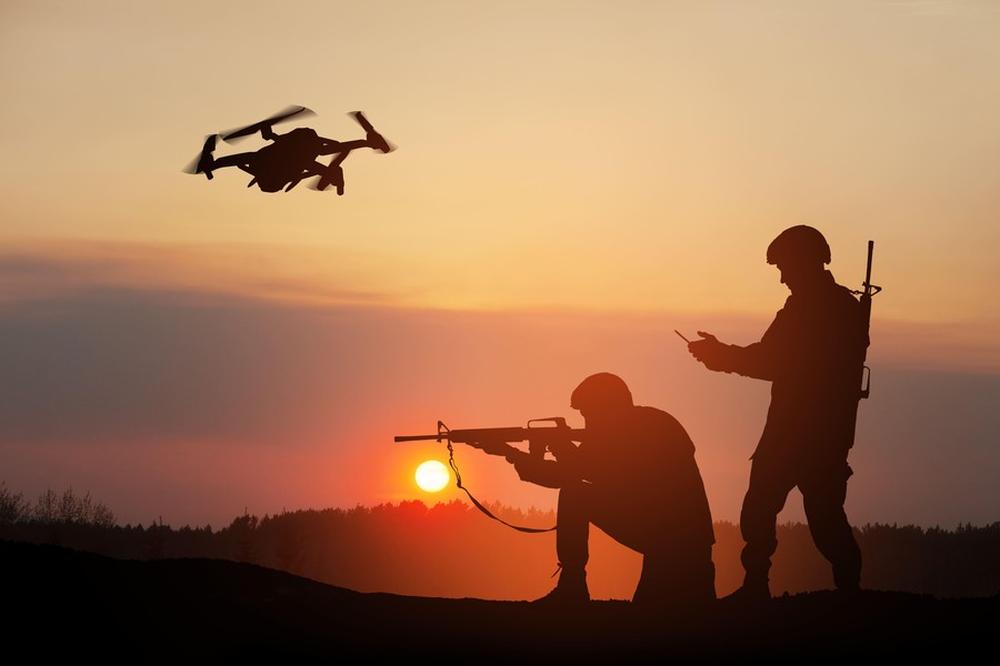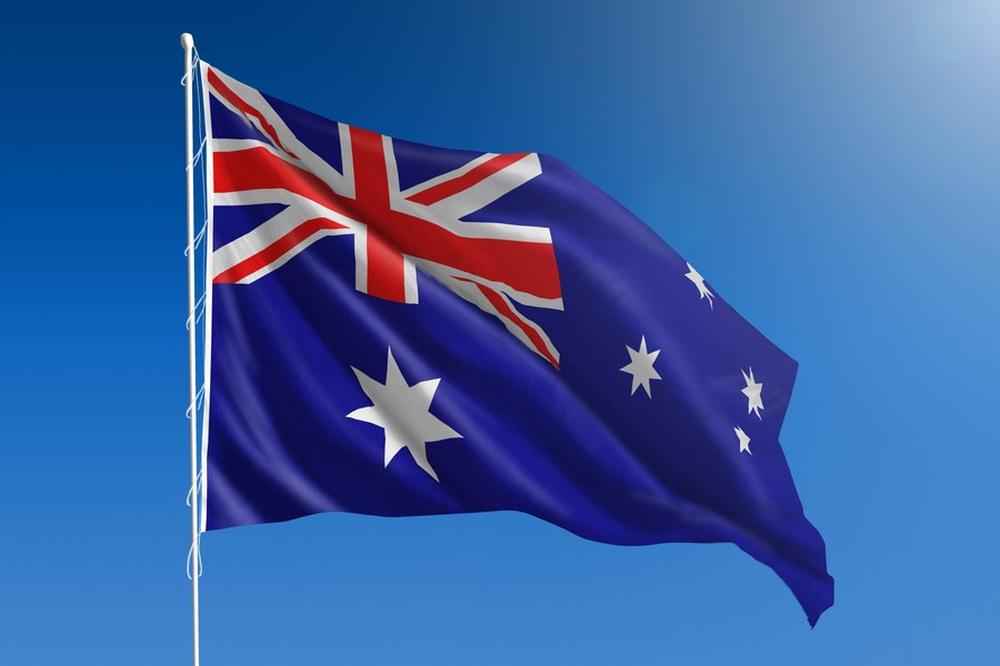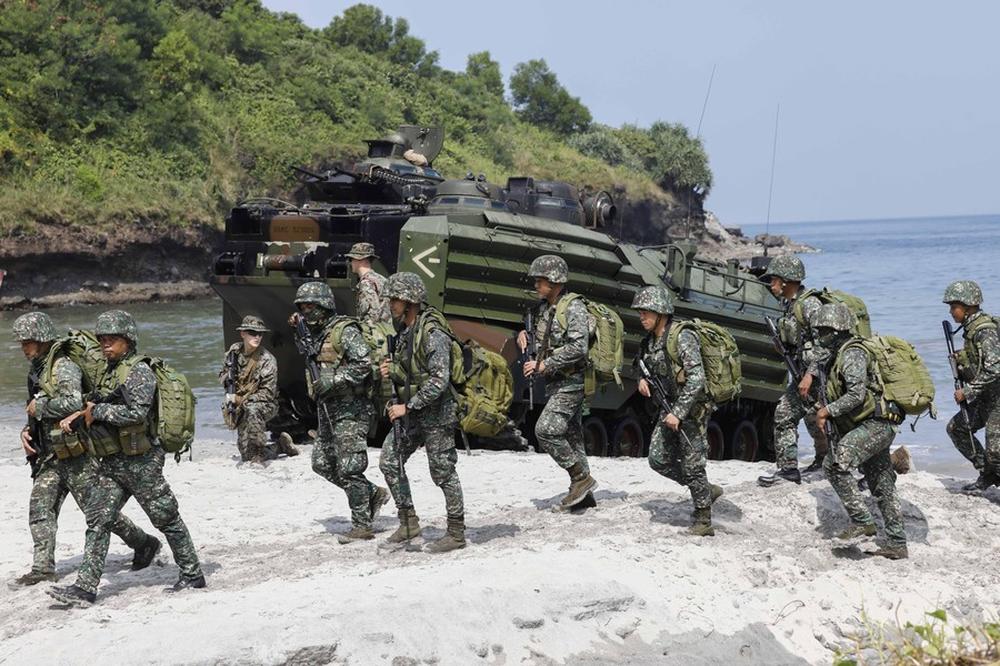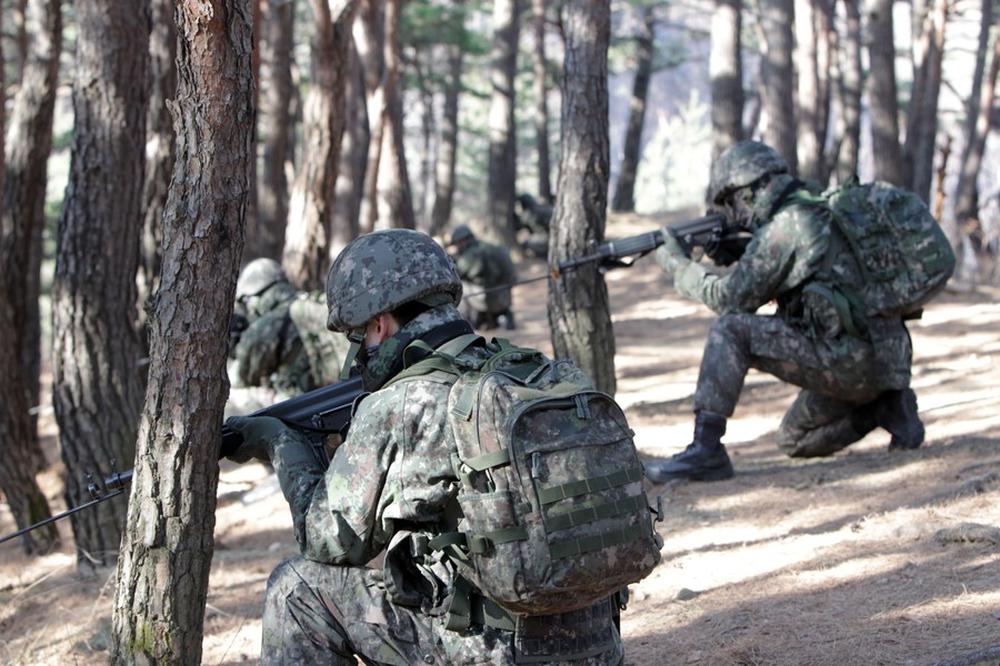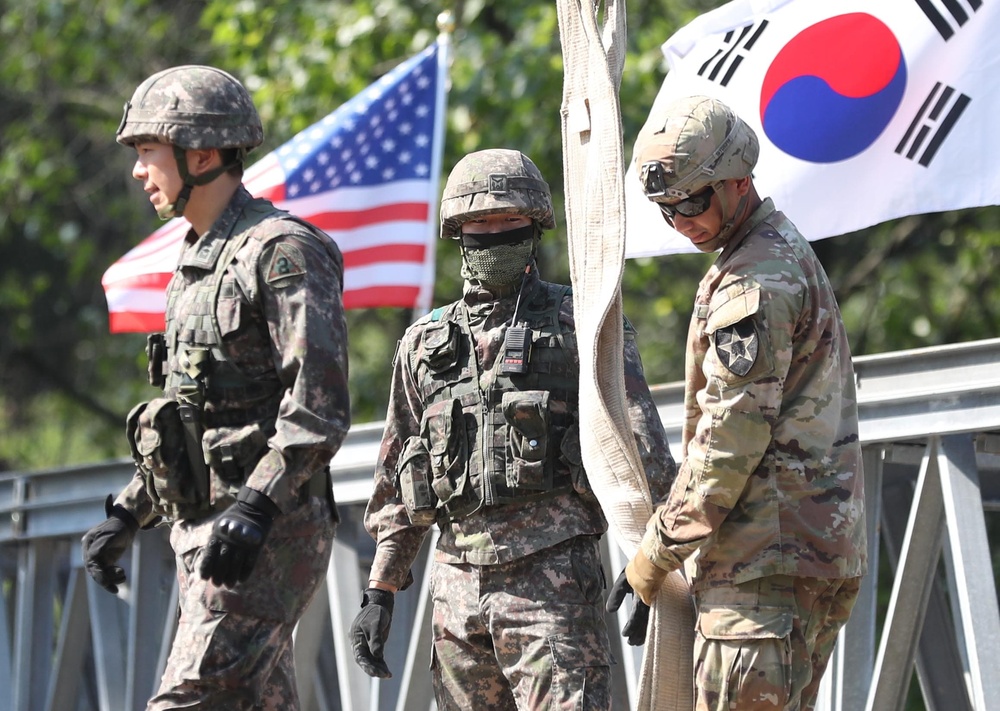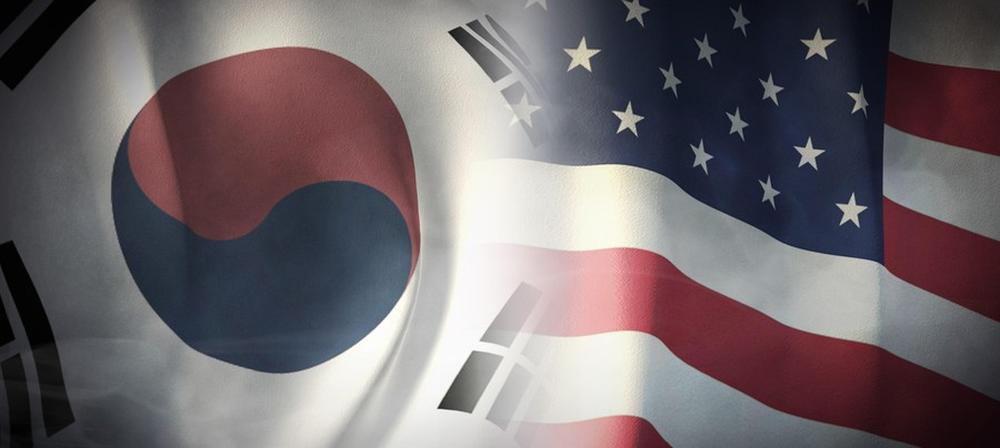- #Multilateral Relations
- #Security & Defense
- #South Korea
- #US Foreign Policy
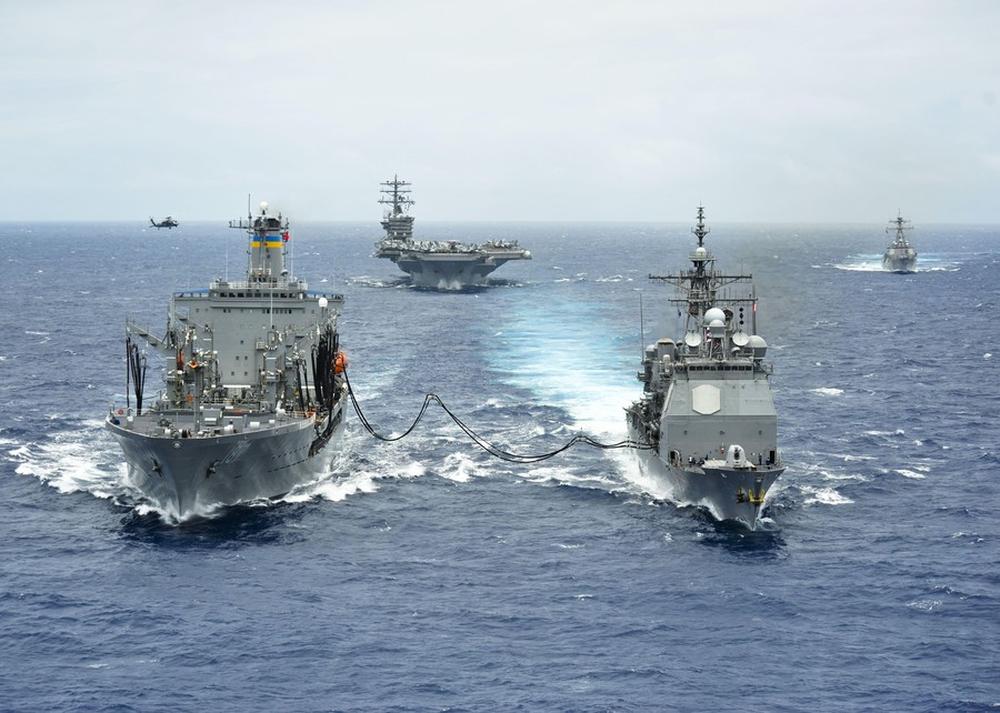
► South Korea joined the warships of all the Quad countries conducted at Visakhapatnam (a port city in south-eastern India, on the Bay of Bengal). MILAN 2022 became the largest joint multilateral military exercise, hosted by the Indian Navy – witnessing the participation of around 42 countries, with ships from over 15 nations.
► By undertaking an intrepid and pragmatic path and policy of foreign policy decision-making since assuming office, South Korean President Yoon Suk Yeol appears to be exhibiting a lucid inclination of drawing Seoul into the mainstream of Asia’s regional security frameworks and discussions pertaining the Indo-Pacific.
►Politically speaking, President Yoon’s quest for advancing South Korea’s national security while maintaining Seoul’s strategic autonomy falls much in line with India’s own approach towards striking a fine balance between idealism and realism in foreign policymaking, reflecting New Delhi’s own political realism in international politics.
► In all, the India-South Korea defense and security ties offer a range of avenues that remain available for expanding cooperation, including defense cooperation, bilateral JMEs with special focus and emphasis on maritime domains, and digital connectivity, among others.
Since the end of the Cold War, the term cooperative security has been used primarily to describe a peaceful approach to security through increased international cooperation. Post-9/11, cooperative security, to a large extent, became a corresponding principle for international security, to being an understanding/commitment among a group of nations with commonality of interests and values within their joint spheres of interest, thereafter taking shape as an overarching concept comprising of defense partnerships and international defense cooperation to meet foreign policy goals via joint military exercises (JMEs), both bilaterally and multilaterally. The overarching need for cooperative security provided defense cooperation a new role. Based essentially on a realist understanding of state behavior, and traditionally employed for realpolitik purposes especially by liberal democratic states, defense cooperation became the sum of many defense-related actions, collectively aimed at furthering one’s national interests through active cooperation with friendly nations.
In the post-9/11 world, confidence-building measures (CBMs), defense cooperation, and military [defense] diplomacy and engagement became not only possible, but highly desirable, given that they reduced transaction costs and made interstate relations more predictable. And thus, participation in JMEs (bilateral and multilateral) became the highest CBM and geopolitical messaging tool that signals commitment, and/or deterrence undertaken by a nation, or a group of nations. Moreover, the geographical location of JMEs is interpreted to being an indication of engagement and trust within partner nations, especially in reference to underlying territorial and sovereignty issues in Asia at hand.
In 2014, India declared transforming its “Look East Policy” into an “Act East Policy.”[1] Subsequently, New Delhi approached its eastern, far eastern, and south-eastern neighbors in Asia with renewed gusto primarily based on Asia’s resurgence, identifying bridging of the Asia-Pacific with the Indian Ocean Region. During the 2014 East Asia Summit and ASEAN-India Summit held in Myanmar,[2] Indian PM Narendra Modi highlighted India’s ambition for regional leadership, emphasizing on its “Act East” Policy framework and strategy. Subsequently, there was a monumental shift in terms of New Delhi speaking out explicitly on stability and security issues in the South China Sea, and adherence to international norms and law. The East Asia Summit for that matter took India beyond the Indian Ocean to the Indo-Pacific. And resultantly, its participation in bilateral, trilateral, and multilateral naval exercises in the Pacific Ocean carried their own weight and meaning.
The now overcrowded Indo-Pacific region has become the new economic and political center of global gravity. This has paved way for rapid shifts in the regional balance of power.[3] The world is multipolar economically, broadly unipolar in military terms, and confused politically – i.e., a world that is in between orders, and adrift.[4] Moreover, China’s economic and military rise, coupled with its growing belligerence and challenging the existing rules-based order send alarm by undertaking capricious actions in the East and South China Seas, and its relentless quest for distant Indian Ocean footholds have focused sharp attention on maritime-security in the region.[5] Notably, India’s maritime trade flowing east through these waters accounts for 55 percent of India’s total trade.[6]
These classical geopolitical realities have called for an adjustment in India’s thinking and formulation of its security strategy for East Asia, especially as territorial and maritime disputes return being centerstage.[7] Consequently, India’s institutionalized mechanisms for bilateral army and naval JMEs with East Asian nations are gaining in prominence and scope. With Japan, India signed a Joint Declaration on Security Cooperation in 2008, and this bilateral relationship has since witnessed significant progress in the realm of defense cooperation, including its institutionalized bilateral JMEs named Dharma Guardian (conducted between the Indian and Japanese Armies) since 2018. While India’s JMEs framework established and sustained across Southeast and East Asia has aided in improving regional security and capacity-building of all concerned Armed Forces, New Delhi’s creation of defense collaboration and linkages with South Korea at the regional level has yet to tap into its maximum potential.
The traditional bilateral relationship between New Delhi and Seoul got elevated to a qualitative higher level, when former President Park Geun-hye paid a state visit to India in January 2014. It was during this visit that a Joint Statement for Expansion of Strategic Partnership was issued, unveiling a blue print for expanding the political, security and defense ties between India and South Korea. Subsequently, Indian PM Modi visited South Korea in May 2015. The trip became momentous, in that it was here when the bilateral relationship got upgraded to a Special Strategic Partnership – thereby establishing a 2+2 consultation mechanism at Secretary/Vice Minister of Foreign Office and Defense Ministry. Notably, South Korea participated as the sole country at the 2016 Maritime India Summit held in Mumbai during April.
Specifically in the realm of JMEs with India, South Korea has participated in the Indian Navy’s MILAN multilateral exercise, most recently in February 2022. South Korea joined the warships of all the Quad countries conducted at Visakhapatnam (a port city in south-eastern India, on the Bay of Bengal). MILAN 2022 became the largest joint multilateral military exercise, hosted by the Indian Navy – witnessing the participation of around 42 countries, with ships from over 15 nations. Significantly, the US joined this Indian JME for the first time – the theme of which was ‘Camaraderie, Cohesion, Collaboration’ – aiming to project India as a responsible maritime power to the world at large, and enabling doctrinal learning in the maritime domain between friendly navies. Besides, at the global level, India and South Korea have been participating in RIMPAC – the world’s largest international maritime warfare exercise, hosted and administered by the US Navy’s Indo-Pacific Command.
By undertaking an intrepid and pragmatic path and policy of foreign policy decision-making since assuming office, South Korean President Yoon Suk Yeol appears to be exhibiting a lucid inclination of drawing Seoul into the mainstream of Asia’s regional security frameworks and discussions pertaining the Indo-Pacific. This is more so, in the capacity of being a major democratic regional power and player – be it as part of a future Quad-plus working group, or a potential expanded AUKUS security arrangement focusing on the Indo-Pacific. From his administration’s originating thoughts and consequent policy approach, Yoon’s idea seemingly is synced with the twin-pronged approach, that of bringing South Korea centerstage in East and Northeast Asia’s regional security architecture conversations, seeking to ensure an economic security and regional defense footprint for South Korea.
Politically speaking, President Yoon’s quest for advancing South Korea’s national security while maintaining Seoul’s strategic autonomy falls much in line with India’s own approach towards striking a fine balance between idealism and realism in foreign policymaking, reflecting New Delhi’s own political realism in international politics. In the case of a civilizational nation-state like India, the ancient realistic contribution of pragmatic statecraft and strategic thought summed up the basic conditioning of international politics, “… bilateral relations are determined by the power equation between two states.” For this reference and purpose, India’s foreign policy establishment has opted for calibrated balancing behavior over band-wagoning and, also demonstrated a penchant for pragmatic issue-based partnerships. This also remains consistent with the policy of maintaining and upholding India’s strategic autonomy – in line with its core national security and strategic interests.
In all, the India-South Korea defense and security ties offer a range of avenues that remain available for expanding cooperation, including defense cooperation, bilateral JMEs with special focus and emphasis on maritime domains, and digital connectivity, among others. This will be vital in expanding the strategic space for Seoul and New Delhi, as key democratic Asian voices, to gain further prominence and say in the regional security dialogues happening in the Indo-Pacific.
[1] The “Look East” Policy was first formulated under then-PM, P.V. Narasimha Rao in 1991 and sought to strengthen India’s relationships with Southeast Asia specifically, and East Asia more generally.
[2] “Modi ‘Acts East’ at East Asia Summit,” The Diplomat, November 14, 2014, available at http://thediplomat.com/2014/11/modi-acts-east-at-east-asia-summit/
[3] Shivshankar Menon, “India’s Foreign Affairs Strategy,” Brookings India Impact Series, May 2020, p. 10.
[4] Ibid.
[5] Arun Prakash, “East meets East,” The Indian Express, October 27, 2018, available at https://indianexpress.com/article/opinion/east-meets-east-5420476/
[6] Ministry of External Affairs (India) (hereafter MEA), Rajya Sabha, Parliamentary Question no. 808, “Trade through South China Sea,” February 9, 2017, available at https://www.mea.gov.in/rajya-sabha.htm?dtl/28041/QUESTION+NO808+TRADE+THROUGH+SOUTH+CHINA+SEA
[7] Menon, n. 3, p. 12.
• Dr. Monika Chansoria is a Senior Fellow at the Japan Institute of International Affairs (JIIA) in Tokyo. Prior to this, she was Senior Fellow for a decade at the Indian Army’s Think Tank, Centre for Land Warfare Studies in New Delhi, where she headed the East Asia & China-study program. She holds a Ph.D. in International Relations from the School of International Studies, Jawaharlal Nehru University (JNU), New Delhi. Besides, Dr. Chansoria has held many senior research appointments, including at the Sandia National Laboratories (U.S.), Hokkaido University (Sapporo, Japan) and as Associate Director of Studies at the Fondation Maison des Sciences de l’Homme (Paris). She specializes in contemporary Asian security and weapons’ proliferation issues, nuclear politics and strategy, and, Great Power politics in the Indo-Pacific with special reference to China. Dr. Chansoria has solely authored five books on Asia’s security affairs, including China, Japan and Senkaku Islands: Conflict in the East China Sea Amid an American Shadow (Routledge © 2018); Nuclear China: A Veiled Secret (2014); and, Chinese WMD Proliferation in Asia: U.S. Response (2009) among others. She has also co-edited a book, Tactical Nuclear Weapons: Conflict Redux (2014). The views expressed here are those of the author personally, and do not necessarily reflect the policy or position of JIIA.
